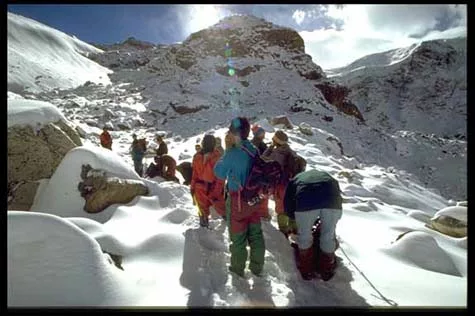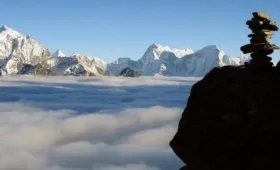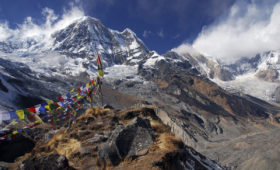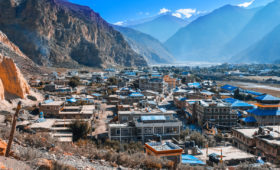Romania, with its Carpathian Mountains, offers stunning natural beauty, but for those seeking a truly extraordinary challenge, the Himalayas beckon. Nepal, the ‘Roof of the World,’ is a mountaineering paradise, offering peaks for climbers of all levels. Let’s explore what it takes to embark on a peak climbing adventure in this breathtaking country.
Why Nepal for Peak Climbing?
Nepal’s Himalayas are a climber’s dream. With a diverse range of peaks, from relatively accessible summits to world-renowned giants, there’s something for everyone. The country’s rich culture, stunning landscapes, and supportive local communities make it an ideal destination for mountaineering enthusiasts.
Choosing Your Peak
Nepal offers a plethora of climbing options, from trekking peaks suitable for beginners to technically demanding expeditions for experienced climbers. Here are some popular choices:
- Island Peak: A popular choice for those new to peak climbing, offering stunning views of Everest and Lhotse.
- Mera Peak: A more challenging peak, requiring technical climbing skills and acclimatization.
- Ama Dablam: A visually striking mountain, offering a challenging yet rewarding climb.
- Everest Base Camp Trek with Island Peak: Combine the thrill of climbing with the iconic Everest Base Camp experience.
Essential Preparations
Embarking on a peak climbing expedition requires meticulous planning:
- Physical Fitness: Intense training is essential. Focus on cardio, strength, and endurance.
- Technical Skills: Depending on the peak, you might need specific climbing techniques like ice climbing or rock climbing.
- Acclimatization: Gradual ascent is crucial to prevent altitude sickness. Plan extra days for acclimatization.
- Gear and Equipment: Invest in high-quality mountaineering gear, including clothing, boots, ice axe, crampons, and a harness.
- Experienced Guide: Hiring a local guide with in-depth knowledge of the mountain is essential for safety and success.
Challenges and Rewards
Peak climbing in Nepal is a demanding but incredibly rewarding experience. Be prepared for:
- Altitude Sickness: This is a common challenge. Acclimatize properly and be aware of symptoms.
- Harsh Weather Conditions: The Himalayas can be unpredictable, with rapid weather changes.
- Physical and Mental Demands: Climbing requires both physical strength and mental resilience.
- Isolation: Some peaks are remote, offering solitude but also requiring self-reliance.
However, the rewards are equally immense:
- Overcoming Challenges: Reaching the summit is a personal triumph.
- Stunning Views: The panoramic vistas from the top are beyond description.
- Personal Growth: Peak climbing pushes personal boundaries and builds character.
- Cultural Immersion: Interacting with local Sherpa communities offers a unique cultural experience.
Safety First
Safety is paramount when climbing in the Himalayas. Here are some essential tips:
- Thorough Research: Understand the specific challenges of the peak you choose.
- Experienced Guide: Hire a qualified and experienced guide.
- Emergency Equipment: Carry essential emergency gear, including first aid kit, satellite phone, and avalanche equipment.
- Acclimatization: Prioritize acclimatization to prevent altitude sickness.
- Weather Monitoring: Stay informed about weather conditions.
Conquering a Himalayan peak is a life-changing experience. With careful planning, physical preparation, and a respect for the mountains, you can turn your dream into reality.




